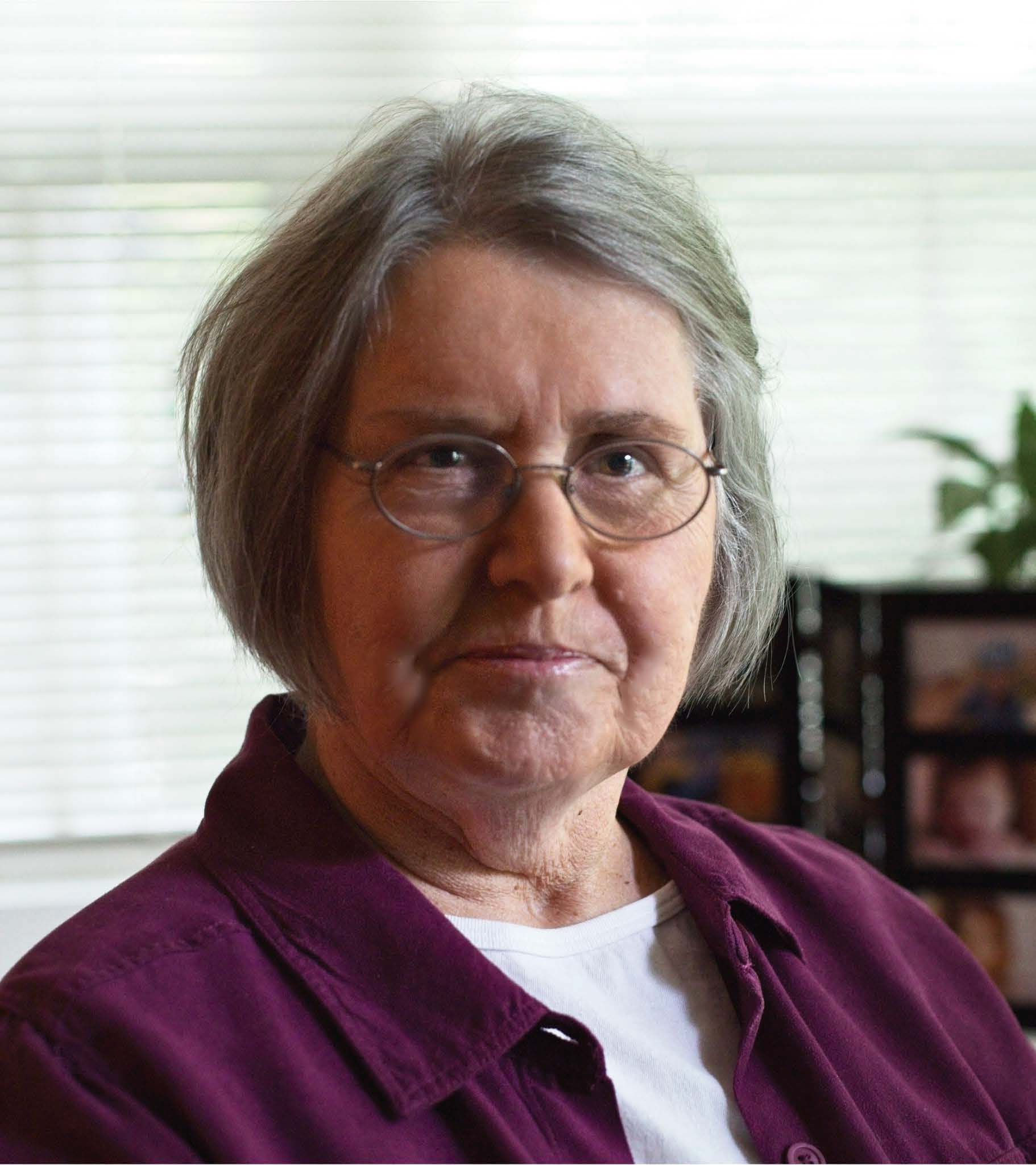The Satter Approach
 Ellyn Satter is an internationally recognized authority on eating and feeding. She is a nutritionist, family therapist, author, trainer, publisher, and consultant. During her over 40-year clinical career, she worked first as a registered dietitian in an outpatient medical practice, then as a psychotherapist in private practice specializing in family-based treatment of eating disorders. She began her writing and speaking career in 1983 with the publication of Child of Mine: Feeding with Love and Good Sense.
Ellyn Satter is an internationally recognized authority on eating and feeding. She is a nutritionist, family therapist, author, trainer, publisher, and consultant. During her over 40-year clinical career, she worked first as a registered dietitian in an outpatient medical practice, then as a psychotherapist in private practice specializing in family-based treatment of eating disorders. She began her writing and speaking career in 1983 with the publication of Child of Mine: Feeding with Love and Good Sense.
Satter’s work is transformative in the lives of individuals, families and professionals who support others with eating and feeding.
Research shows that being Eating Competent—being self-trusting and positive with respect to food, eating and feeding—does more for nutritional, medical, and emotional health than adhering to a set of rules about what to eat and not eat.
The non-profit Ellyn Satter Institute is named for Ellyn Satter, and was created to carry on the legacy of her work.
The Satter Approach to Feeding
by Ellyn Satter
My mission is to show parents how to make feeding practical, positive, and joyful for them and their children. We want our children to eat well and grow up to be healthy. I know now that the way to achieve children’s wellness is to let them feel good about their eating.
Feeding my child began poorly
I didn’t worry about feeding. I was a dietitian working in an outpatient medical practice; I knew about these things. I was shocked when, at my rapidly growing and happily breastfeeding daughter’s one-month visit, my pediatrician announced, “It is time to start solid foods.” I accepted those crazy instructions, struggled with feeding, and started the downhill slide to weaning my daughter from breastfeeding at age four months. I deferred to that MD, but she didn’t deserve it. Through generations of parents and babies, she ignored the evidence that her advice was doing harm: parents and babies struggled around feeding.
My judgment was better than the guidance
I thought all along that it couldn’t be right. For my month-old daughter, snuggling and breastfeeding worked, and spoon-feeding just plain didn’t. But I went with the program, and after my daughter and I survived new motherhood, I asked questions. I found a lot of clinicians, researchers, and other parents who parroted the advice I had been given. But there were a few who were tuned into the science, relationships, and practicality of feeding. The whole story is in Child of Mine. To make a long story short, when my sons were born I followed my own judgment with feeding. It was fun and easy. Because the new pediatricians at work were willing to learn, I launched my pediatric practice. I taught other parents a kinder, gentler, and more rewarding way to feed their children and solve childhood feeding problems. At the time I was still working on weight loss for adults, but I never got into that with children. If a child does it, I reasoned, it must be right.
Child of Mine: The farewell gift that wasn’t
A decade later and still smarting about that early bad advice, I shared my experience with other parents in Child of Mine: Feeding with Love and Good Sense. I intended that first (1983) edition of Child of Mine to be a farewell gift to dietetics and to feeding and raising young children. I was in graduate school, training to become a psychotherapist, and fully intending to leave dietetics behind. But Child of Mine took on a life of its own. The media, professionals, and parents were excited about the feeding stories, which were actually a minor part of the book. I learned more than I taught, as my audiences tasked me with solving their remarkable and revealing feeding challenges. In Child of Mine, I talked about the division of responsibility in feeding once – in the toddler chapter – but now it became central to my message! For a brief and heady time, folks listened when I said “do not put children on diets or restrict them in any way.” Unfortunately, obesity hysteria made them forget that critical piece of advice and use weasel words and tactics for restricting children’s food intake.
Back into the world of child-feeding
Rather than leaving the world of child-feeding, I turned right around and went back in, this time focusing on feeding dynamics rather than nutrition. Once again, I found tuned-in clinicians, researchers, and parents, and began testing Child of Mine’s practical recommendations with others’ observational research. I held my breath while I read those papers, but my advice held up! Apparently I was a good clinical observer with a functioning feedback loop.
ESI continues the mission
I have been working in the field of feeding dynamics ever since: writing, consulting, doing presentations, mentoring. The Satter Division of Responsibility in Feeding (sDOR) has become widely recognized and used, if not always accurately, and it is endorsed as the best practice in feeding by prominent child nutrition and pediatric agencies. In 2002, reasoning that my shelf-life was dwindling and wanting to position others to carry on the work, I started the Ellyn Satter Institute. Together, we do what we can to bring along other professionals and to help parents feed their children in practical, positive, and joyful ways. This website has millions of hits each year, and many professionals and parents depend on our feeding advice.
Testing sDORTo develop a test for sDOR, Barbara Lohse, professor and researcher, and I wrote, tested, rewrote, and tested-tested-tested again. After 10 years, sDOR 2-6y has been validated and is available for use in clinical practice and research. Our validation research shows that parents really do what they say they do with feeding. When they follow sDOR, their children have lower nutritional risk, and that is enormous! Unlike the struggles around getting children to eat the right food and avoid the wrong food that go on in many if not most families, parents simply have to be nurturing and trusting feeding by following sDOR. They can provide their child with the what, when, and where of feeding and let their child do the how much and whether of eating. Parents who are Eating Competent do better with following sDOR, and parents who follow sDOR feel and do better overall: They sleep better, their moods are better, and they have lower stress.
The Satter Approach to Eating
I created the Satter Eating Competence model because I was determined to help without harming. After years of trying, failing, and trying again, I have discovered that eating is about the joy of life, and that the joy in eating is about wellness.
The weight loss dreamAs a young dietitian in my outpatient practice, I knew the data: 5% of people can lose weight and keep it off. But it would be different for me! I had my nifty diets and I could motivate and do follow-up. So I and my unfortunate patients struggled with weight: The man who lost 100 pounds and gained it right back; The many who stopped coming and blamed themselves for failing; The ones for whom I had nothing more to offer who became dependent on me for weight management; The two (2) who lost weight and kept it off. The last two were both virgin dieters who started out inactive and eating a lot. Clinicians in professional journals reported producing weight loss, why couldn’t I? I must have to do more, harder! I realized too late that the literature lies: by cherry picking results, presenting distorted statistics, giving short-term results.
The behavioral weight control fiascoSo I did more, harder, and it was a doozy. I trained with a then-leading expert in the then-popular behavioral weight method, and I was transformed. I was charismatic as for 20 weeks I inspired a group of dedicated and tolerant people who deserved far better than they got. Those lovely folks did everything I asked: recorded eating times, feelings, circumstances, counted calories, put their forks down between bites, ate only sitting down, in a certain place, with no associated activates, exercised vigorously and, of course, recorded and graphed it all. There was more, but memory (mercifully) fails me. They lost weight in gobs.
Creating nutrition trauma
Thank goodness for follow-up. One month – one month – after the end of the 20-week group, everyone came back heavier. My star couple. My man who was an obsessive dieter who lost weight for the first time in years. His helpful and supportive wife. Everyone. And they were so ashamed. I was young, I was shocked. I was speechless. I so wish I had said to them, “What have I done to you?” Following that debacle, I saw others who had become nutritionally crippled at my hands: the patients with diabetes, those with heart disease, ulcers and high blood pressure. But I drew the line at children, and that was part of my redemption.
Learning to ask questions
In disarray, I went back to graduate school to become a psychotherapist, where I learned not to give answers but to ask the questions I should have asked all along: How do you see that you get fed? How do you feel about eating that way? How were you fed when you were a child? What would you like to be different? It was scary at first to stop telling people what and how much to eat and simply do a bit of tweaking. We all feared that they would go out of control. But they didn’t. Unlike the folks on diets, their eating developed order and reliability. Gradually, the components of eating competence became apparent to me: positive attitude, interest in food, ability to internally regulate, relaxed, confident, practical, and structured food management.
Testing the Satter Eating Competence ModelWithout weight loss as an outcome indicator, I needed a test to measure eating-that-is-going-well. So I wrote it, tried it out with my patients, rewrote, and finally arrived at a test that worked great. Enter professor and researcher Barbara Lohse, who asked, “does this instrument stand up to testing?” She meant real, research-based testing. I don’t know, I said, but I am game to see. We designed and she coordinated the research trial for what she named the Satter Eating Competence Inventory (ecSI), and after five years we had our answers. Whew. The test works. People who score high on the test do better. Our original work with ecSatter and ecSI was published in a 2007 supplement to the Journal of Nutrition Education and Behavior.
This brings us to youThis last part of the story is about you. My colleagues and I have worked hard on this website. We hope you will use it to expose yourself to the discovering the joy of eating – and feeding – following the Satter models.
Poke around on the ESI website and see what you see. Read the materials, participate in a webinar, and sign up for our newsletter.
Join our Facebook pages for the public and for professionals. Ask questions. Share your experience. Learn and grow.
Get in touch with us and share your ideas for how you could help reach out to other individuals and professionals.
Consider a donation. Your donation supports our website, new trainings and resource development. We depend on donations. They are so important to sustain and grow the organization – and it is tax-deductible.
